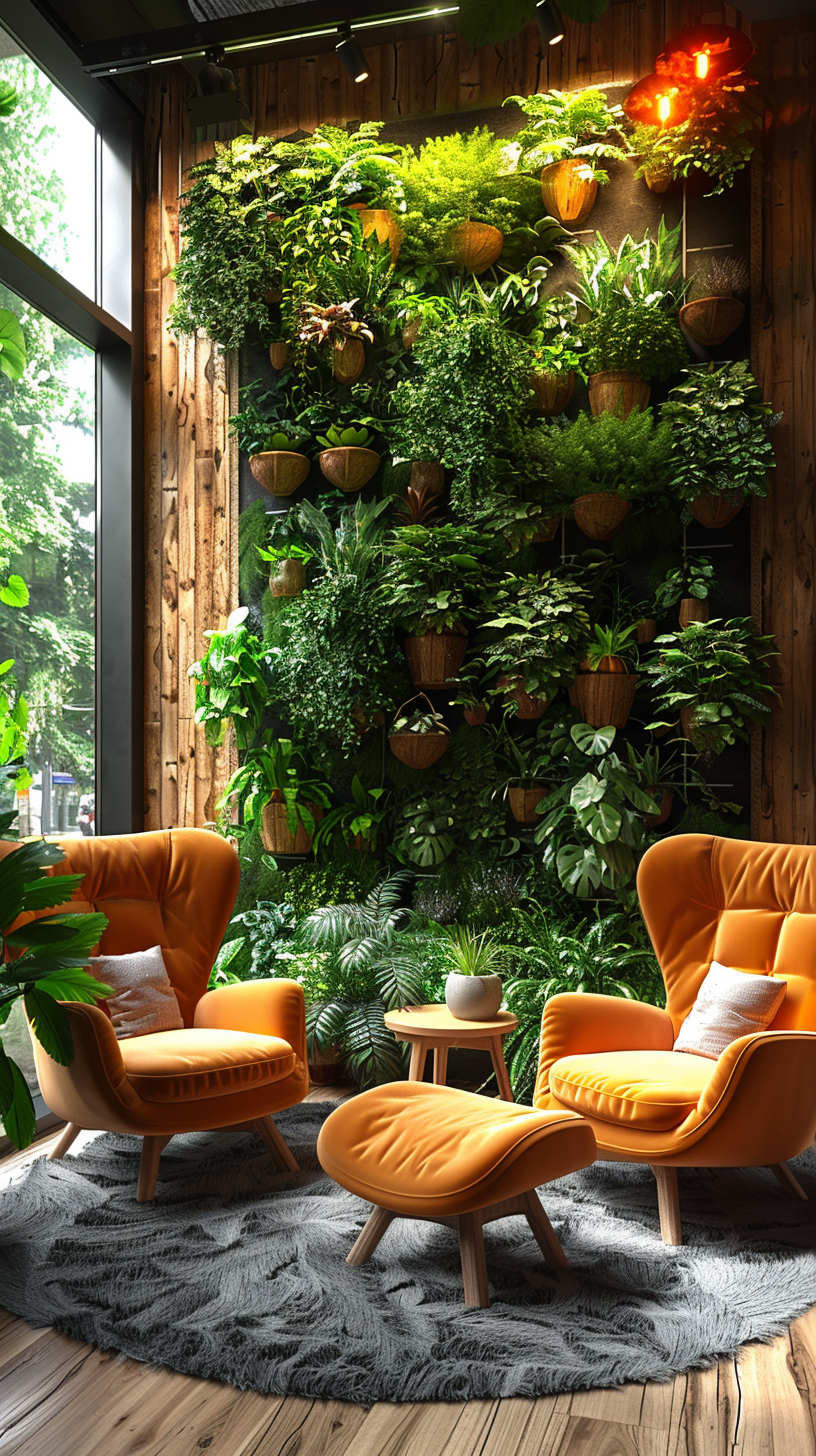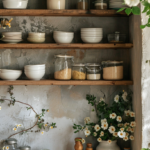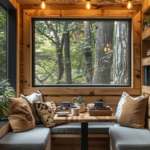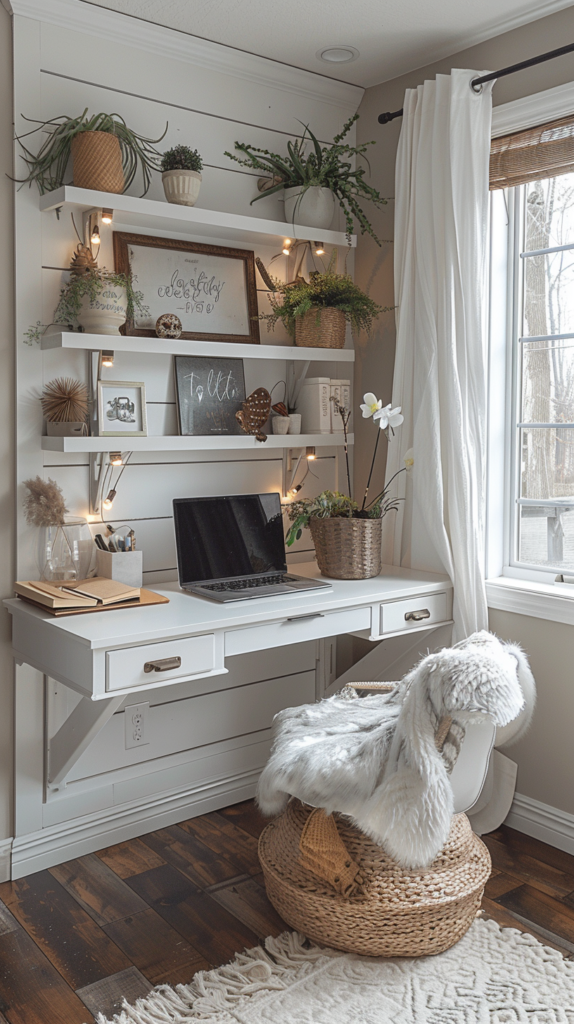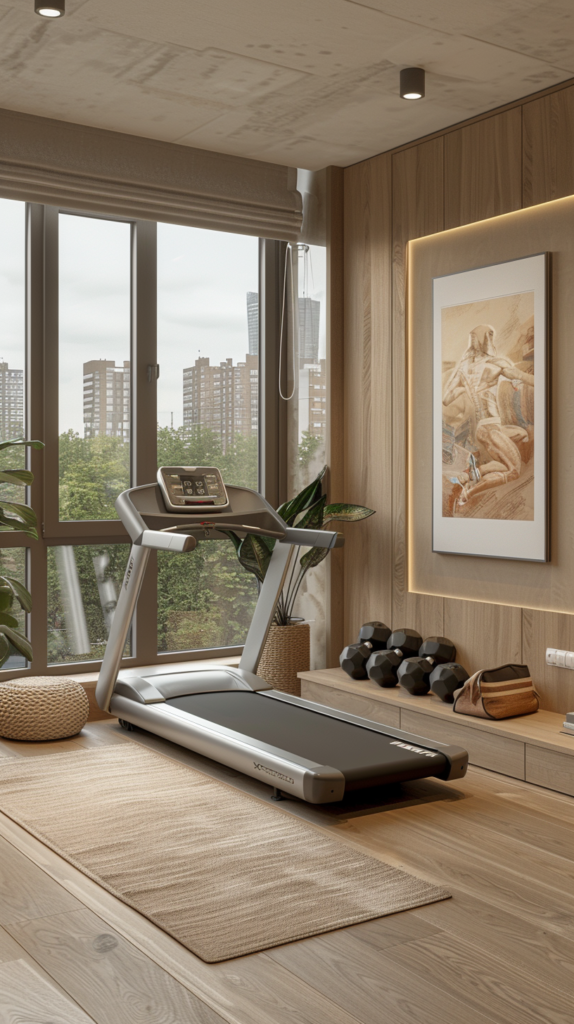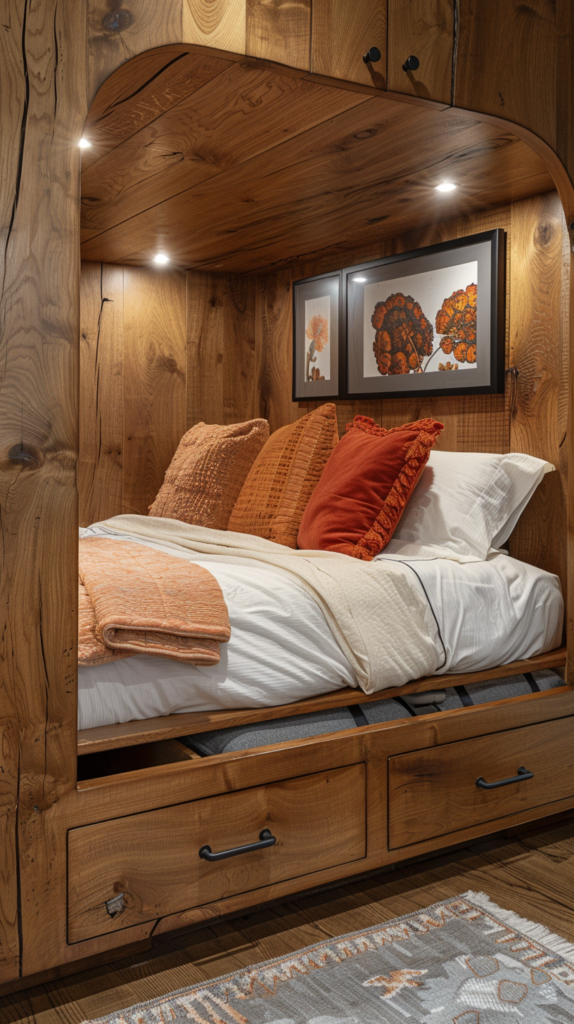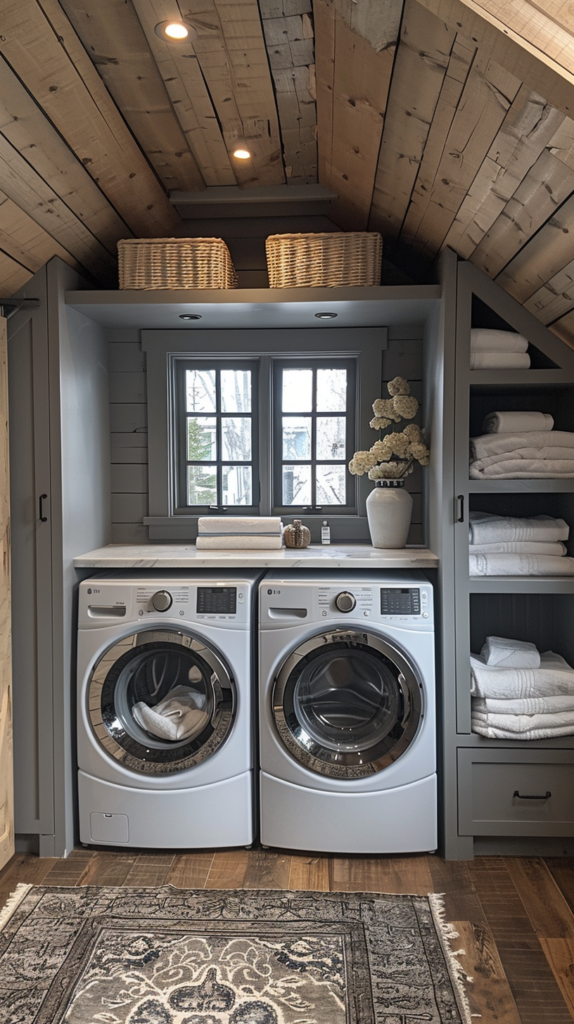Introduction
In the world of urban living, space is often at a premium. Vertical gardens offer an ingenious solution for incorporating greenery into small spaces without sacrificing floor area. This guide explores how to create and maintain vertical gardens, allowing you to enjoy lush, vibrant plants even in compact environments. From creative design ideas to practical tips, you’ll find everything you need to bring a touch of nature into your home.
Planning Your Vertical Garden
1. Assess Your Space
Evaluate Wall Space
Begin by assessing the available wall space in your small area. Look for walls in living rooms, balconies, or even inside kitchens where a vertical garden could be integrated. Choose a wall that receives adequate natural light or where you can install supplemental lighting.
Measure the Area
Accurate measurements are crucial to ensure your vertical garden fits perfectly. Measure the height and width of the wall and consider any obstructions like light switches or outlets. This will help you determine the size of the garden and the type of system that will work best.
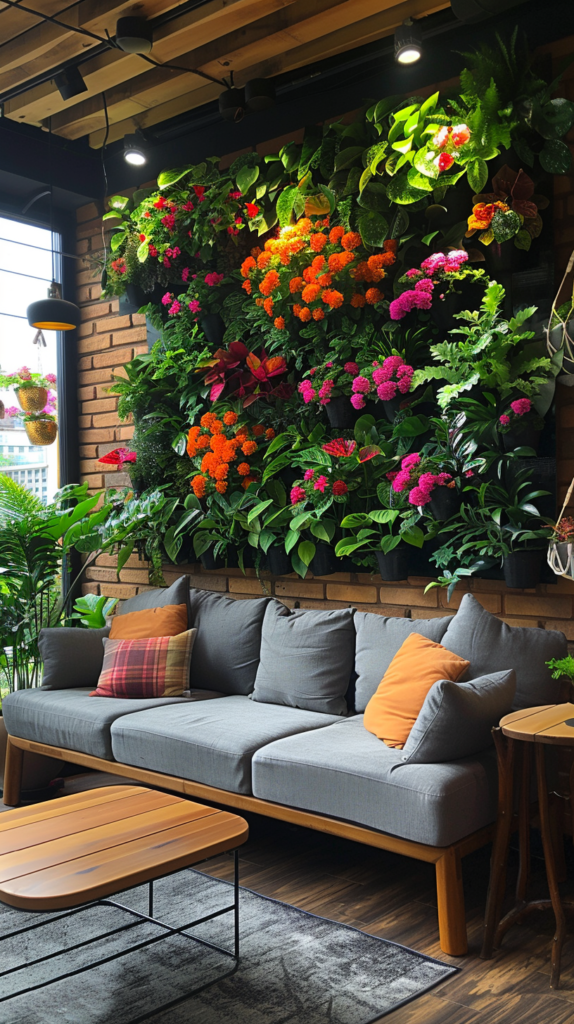
2. Choose the Right Type of Vertical Garden
Opt for Wall-Mounted Planters
Wall-mounted planters are a popular choice for vertical gardens. They come in various sizes and shapes and can be arranged in creative patterns. These planters are ideal for growing small to medium-sized plants and can be easily installed using brackets or hooks.
Consider Vertical Planter Systems
Vertical planter systems such as modular panels or living walls** are perfect for more extensive greenery. These systems can support a wide range of plants and often include built-in irrigation systems. They’re ideal for creating a lush, cascading effect in your vertical garden.
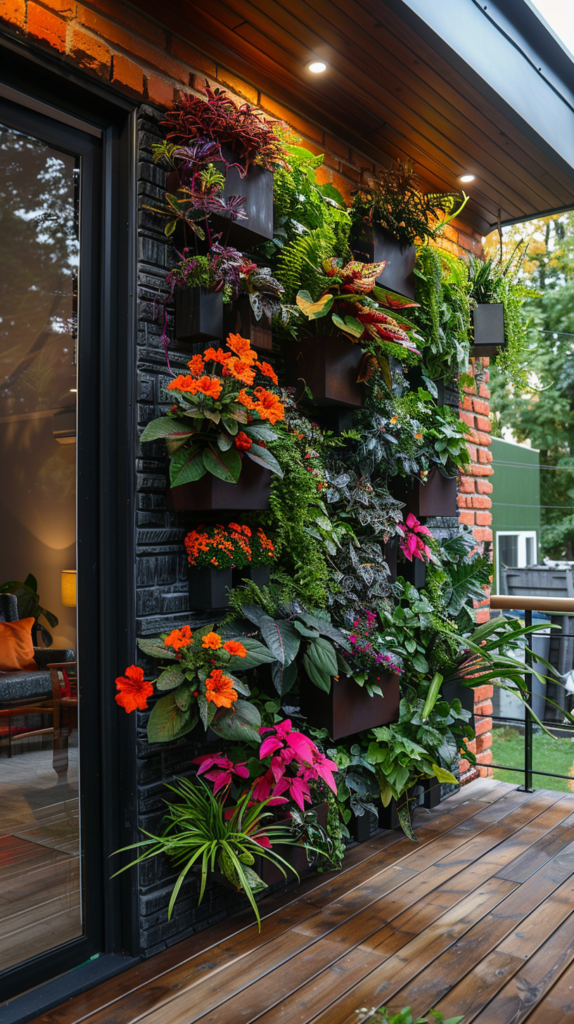
Selecting Plants for Your Vertical Garden
1. Choose Plants Based on Light Conditions
Select Shade-Tolerant Plants
For low-light areas, choose shade-tolerant plants like ferns, ivy, or pothos. These plants thrive in indirect light and can add a touch of green without needing direct sunlight. They’re perfect for indoor vertical gardens or shaded outdoor walls.
Opt for Sun-Loving Plants
In brighter locations, select sun-loving plants such as succulents, herbs, or flowering varieties like petunias. These plants require more light and will flourish in sunny vertical gardens. Consider the light conditions when choosing plants to ensure they thrive in your space.
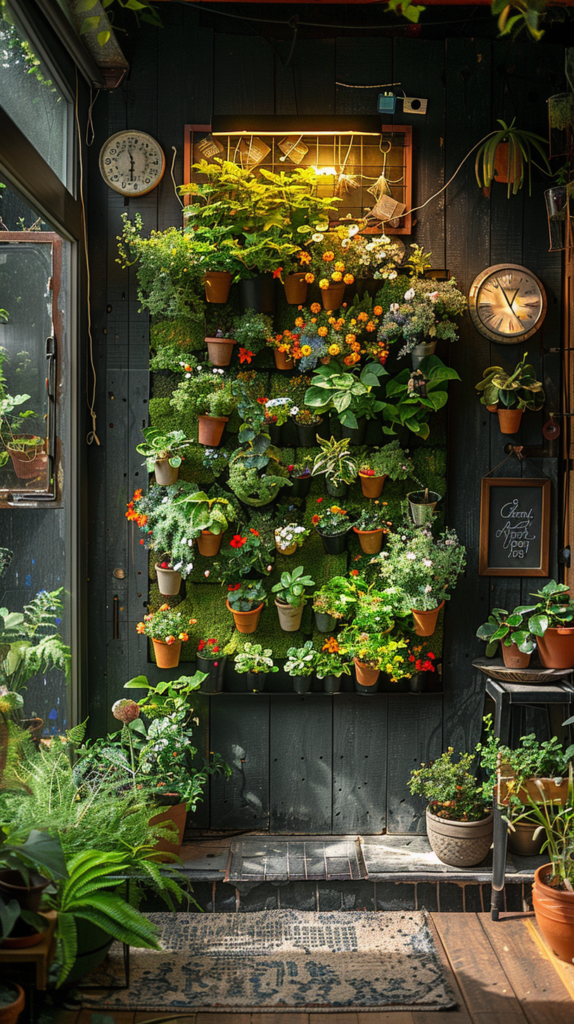
2. Consider Plant Size and Growth Habits
Choose Compact Plants
For smaller vertical gardens, opt for compact plants that won’t outgrow their space. Plants like spider plants, succulents, or small herbs are ideal for confined areas. Their manageable size ensures they fit well in wall-mounted planters or small spaces.
Incorporate Climbing Plants
Climbing plants and vines can add vertical interest and fill space efficiently. Consider varieties like pothos, ivy, or clematis that naturally climb and spread. These plants can create a lush, cascading effect in your vertical garden.
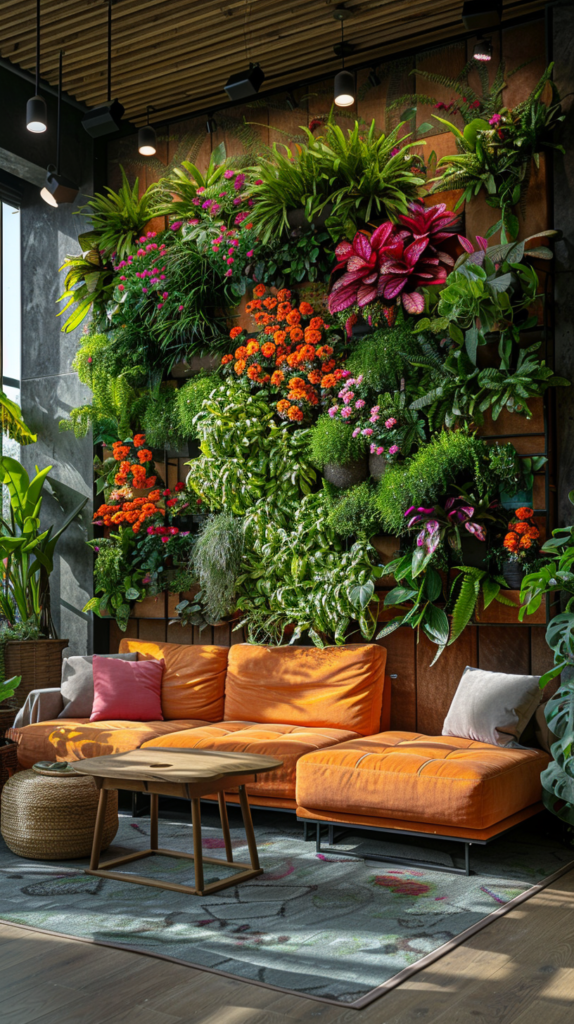
Installing Your Vertical Garden
1. Prepare the Wall
Clean and Prime the Surface
Before installation, clean and prime the wall to ensure proper adhesion and prevent damage. Remove any dust, dirt, or peeling paint from the surface. Priming the wall helps the garden system adhere better and improves the longevity of the installation.
Install Support Structures
Install any necessary support structures such as brackets, rails, or mounting hardware. Ensure they are securely attached to handle the weight of the plants and soil. Follow the manufacturer’s instructions for installation to ensure stability.
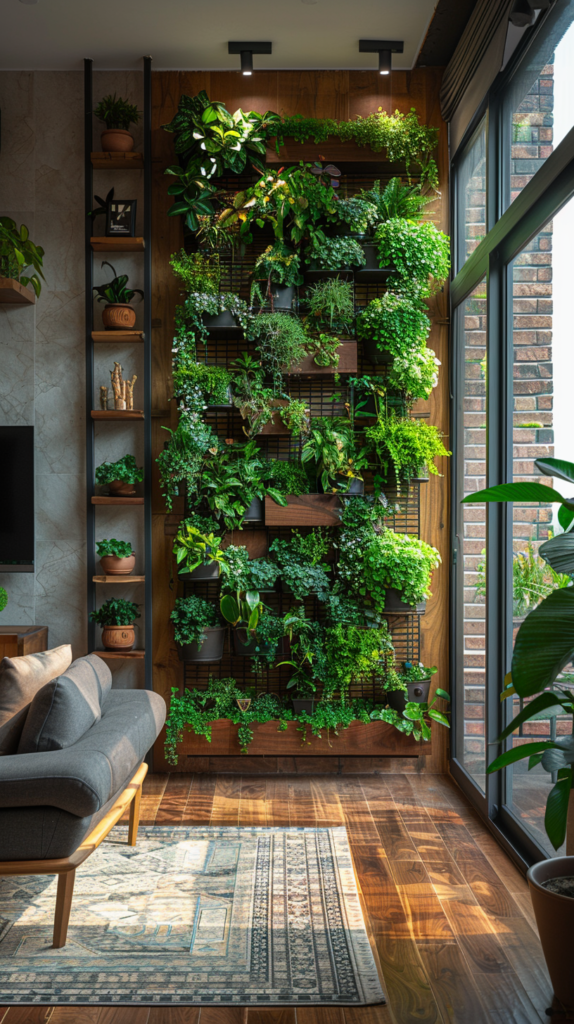
2. Set Up the Planters
Arrange Planters According to Design
Arrange the planters on the wall according to your design plan. Use a level to ensure they are evenly spaced and aligned. Consider different heights and angles to create visual interest and optimize plant growth.
Fill Planters with Soil and Plants
Fill the planters with suitable potting soil and plant your chosen greenery. Ensure the soil is well-draining to prevent waterlogging and root rot. Carefully place the plants in the planters and gently press the soil around them.
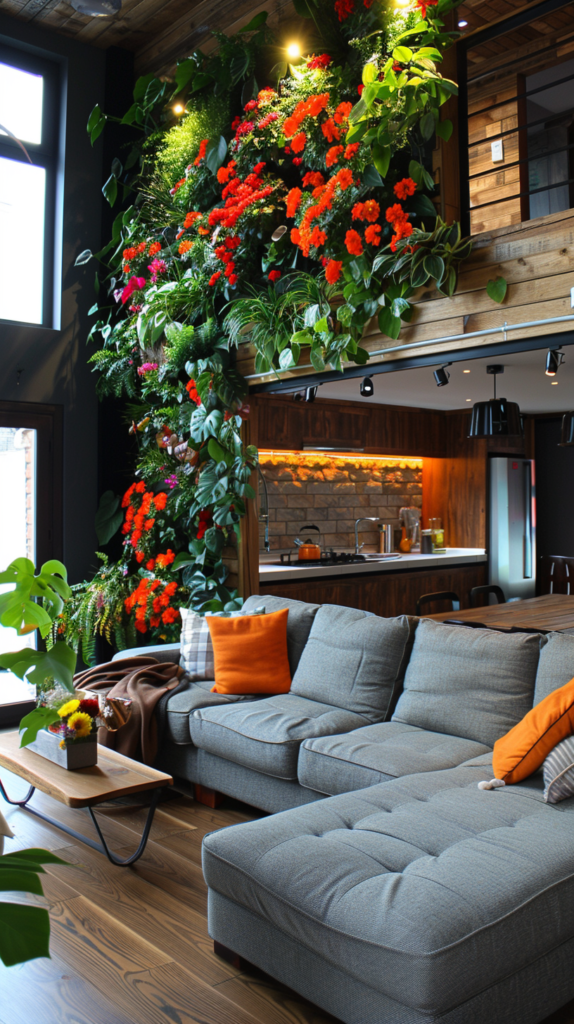
Maintaining Your Vertical Garden
1. Watering and Irrigation
Establish a Watering Routine
Develop a regular watering routine based on the needs of your plants. Indoor vertical gardens may require less frequent watering than outdoor ones. Monitor the moisture level of the soil and adjust watering as needed.
Use Drip Irrigation Systems
Consider installing a drip irrigation system for consistent watering. Drip systems deliver water directly to the plant roots and can be customized to fit your vertical garden setup. This system helps maintain optimal moisture levels and reduces the need for manual watering.
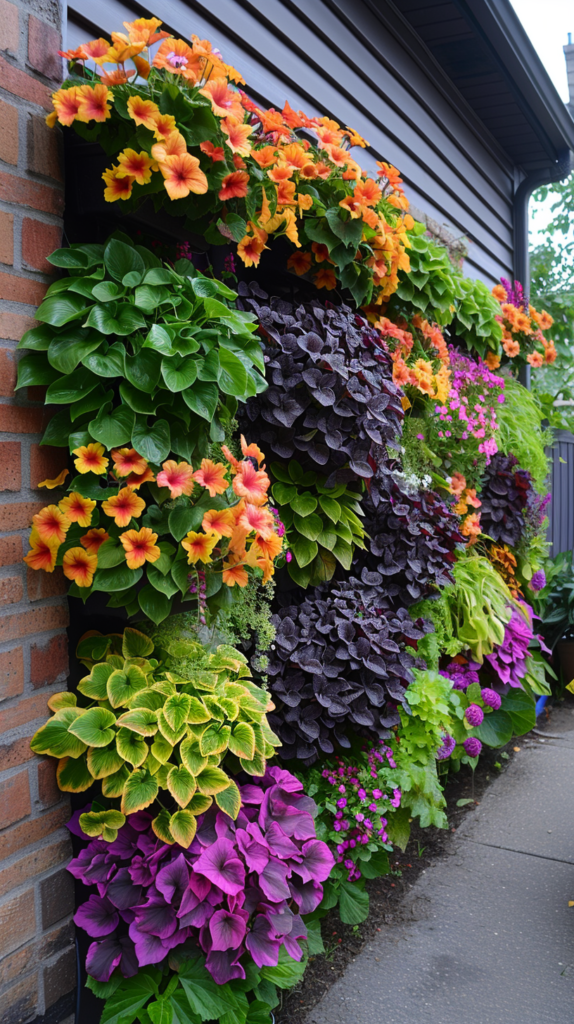
2. Pruning and Care
Regularly Trim and Prune Plants
Prune and trim plants regularly to encourage healthy growth and maintain their shape. Remove any dead or yellowing leaves and check for pests or diseases. Regular care helps keep your vertical garden looking its best.
Fertilize as Needed
Apply a balanced fertilizer to support plant growth. Follow the manufacturer’s recommendations for the appropriate amount and frequency. Fertilizing provides essential nutrients and helps plants thrive in their vertical environment.
Design Tips for Vertical Gardens
1. Create Visual Interest
Use Different Plant Textures and Colors
Incorporate a variety of plant textures and colors to create visual interest. Mix leafy greens with colorful flowers or textured succulents for a dynamic display. Variety adds depth and vibrancy to your vertical garden.
Experiment with Plant Heights
Vary the heights of plants to create a layered effect. Place taller plants at the back and shorter ones in the front. This layering technique adds dimension and enhances the overall appearance of the vertical garden.
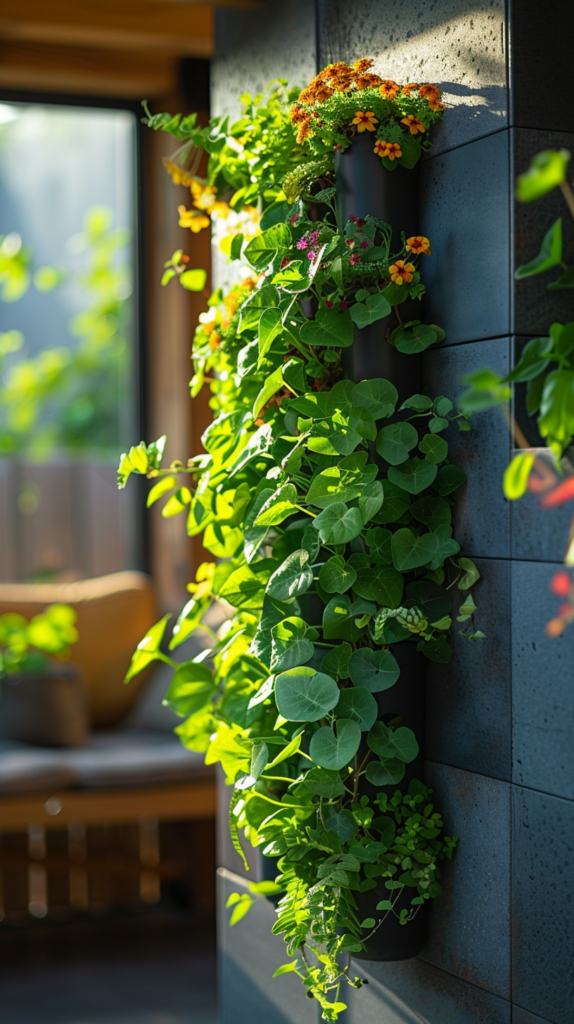
2. Integrate with Interior Design
Coordinate with Room Decor
Coordinate the vertical garden with your room’s decor to create a cohesive look. Choose planters and frames that match or complement your existing furnishings. A well-integrated vertical garden enhances the overall aesthetic of your space.
Use Vertical Gardens as Art
Consider your vertical garden as a piece of living art. Design it with artistic flair by arranging plants in geometric patterns or creating a color gradient. A thoughtfully designed vertical garden can become a striking feature in your home.
Conclusion
Vertical gardens offer a stylish and efficient way to incorporate greenery into small spaces. By choosing the right plants, planning your design, and maintaining your garden properly, you can create a lush, vibrant space that enhances your living environment. Embrace these tips and techniques to transform your small space into a verdant retreat.
FAQs
What are the best plants for low-light vertical gardens?
Shade-tolerant plants such as ferns, ivy, and pothos are ideal for low-light conditions. These plants thrive in indirect light and are well-suited for indoor vertical gardens.
How do I choose the right vertical garden system for my space?
Consider the available wall space, light conditions, and the type of plants you want to grow. Wall-mounted planters are great for small spaces, while vertical planter systems offer more extensive greenery.
How often should I water my vertical garden?
Watering frequency depends on the plant types and environmental conditions. Establish a routine based on your plants’ needs and use a drip irrigation system for consistent moisture.
Can I grow edible plants in a vertical garden?
Yes, you can grow edible plants such as herbs, lettuce, and small vegetables in a vertical garden. Choose compact or climbing varieties that fit your space and light conditions.
How can I prevent pests in my vertical garden?
Regularly inspect your plants for signs of pests and maintain proper plant care. Use organic pest control methods and ensure good air circulation to minimize pest issues.

